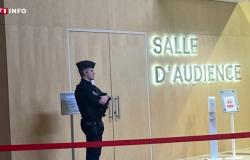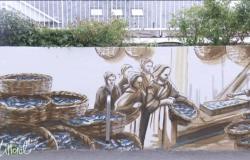The Department has just voted for exceptional aid for farmers victims of bad weather last spring. An envelope of 40 000 euros which is part of the departmental strategy aimed at maintaining agricultural activity in the territory of Val d'Oise. Interview with Paul Dubrayfarmer and departmental advisor in charge of Rurality and Relations with the agricultural world.
The Department has just voted in September for exceptional support for the agricultural world. Can you tell us more?
Paul Dubray : This exceptional aid fund concerns farmers seriously affected by the heavy rains and storms last spring, which led to mudslides and significant damage. This represents a little more than 88 hectares and concerns between 25 and 30 farms. The year is already difficult. So, we decided on exceptional assistance. It's not so much for the money, even if 40,000 euros is a budget. But above all it is to show them our support, that we are behind them in case of problems. We must be there, in good times and bad.
And precisely, the “agricultural strategy” of the departmental council sets itself the objective of maintaining agricultural activity…
This is indeed the first objective of our new agricultural strategy adopted last June. Agriculture in Val d'Oise represents more than 55,000 ha. This is approximately 45% of the territory, which is essentially cultivated. We have a little industrial cultivation (beets, potatoes) and a little market gardening, horticulture and arboriculture. There are approximately 500 to 515 farms that support our department and are part of its landscape. To sustain this existing situation, we must promote the employment and settlement of young people. Within ten years, nearly 50% of farm managers will be retired. It's huge, and we have a lot of trouble finding young people to settle down.
How do you measure the maintenance of this agricultural activity? In hectares, in turnover or in number of jobs?
Agricultural activity, as with any business, is about turnover. Therefore, this objective of maintaining agricultural activity first involves the economic aspect. And that's why we're trying to push our farmers to diversify because I think there's a card to play. In addition, it is part of the department's strategies to integrate short circuits and local.
Short and local circuit are part of an important part of your departmental strategy. I also believe that in September you launched a call for projects in this sense?
There is significant demand. For fruits, vegetables, but also processed products, such as pasta. Many people have understood that local foods, without intermediaries, are not more expensive. And we too contribute to this through our program for college canteens. But producers are overwhelmed: there are many demands and few offers. So the goal is to try to encourage farmers who are having a little trouble getting by to diversify. There is a test to transform, even if the implementation will be long.
Maintaining agriculture must also integrate adaptation to climate change. What role does the Department play in this area?
There are several budget lines concerning this adaptation. The Department supports experimentation within the Chamber of Agriculture to find new varieties or new practices. We also support the planting of hedges and irrigation when it concerns a diversification project.






